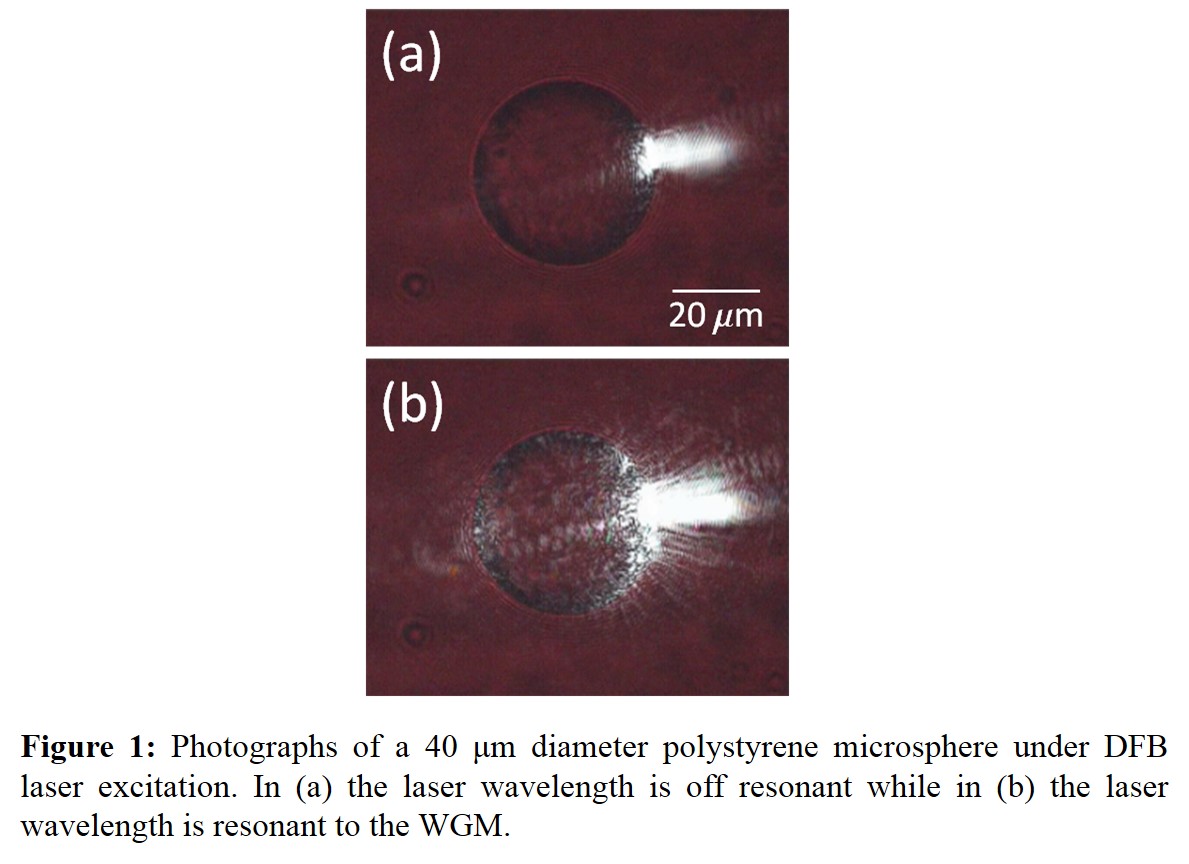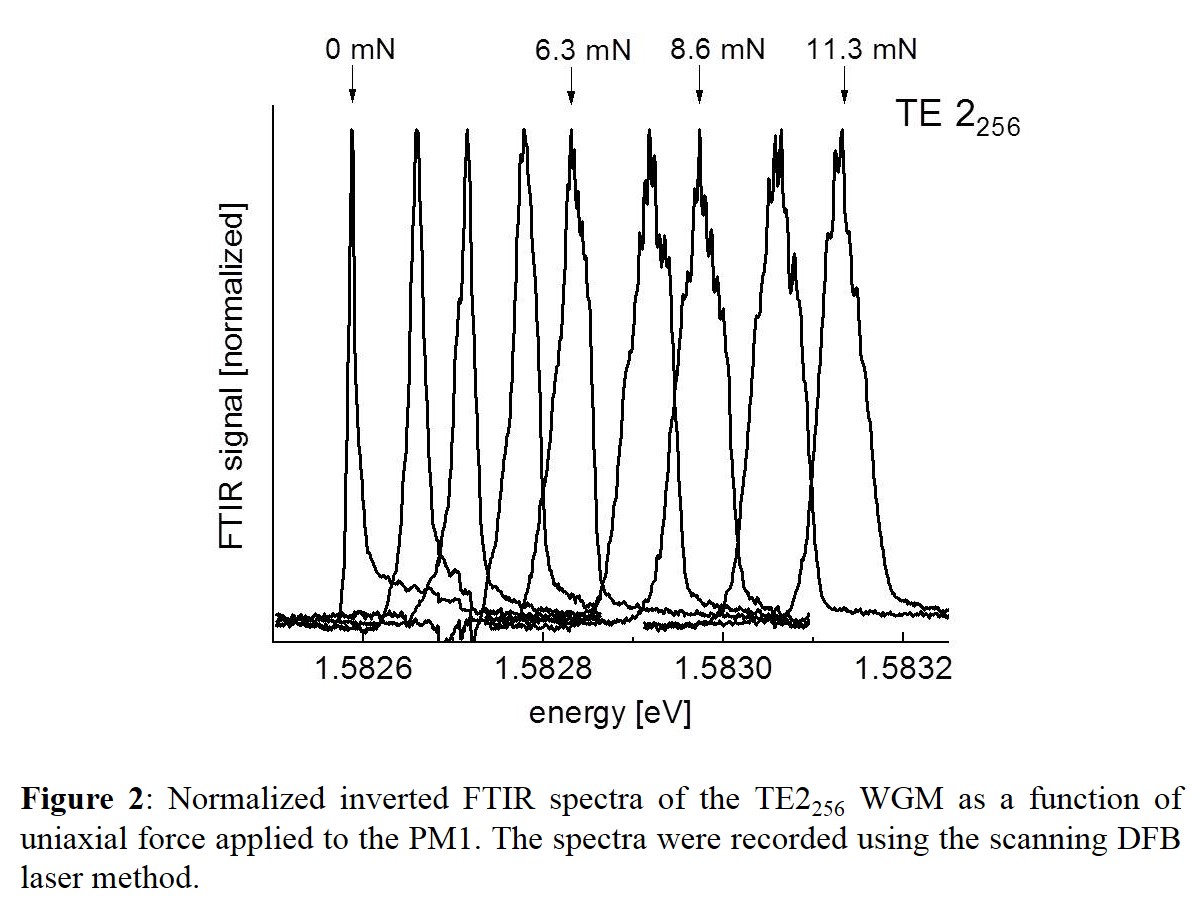Whispering Gallery Modes In Microspheres
Effects of uniaxial pressure on polar whispering gallery modes
Optical microsphere resonators supporting whispering gallery modes (WGM) have recently attracted interest because of their potential for a range of applications. The high quality factor Q = ν/Γ , where ν is the center frequency and Γ is the full width at half maximum (FWHM), of the WGMs of up to 1010 has given rise to studies on the lasing properties of droplets and microspheres. In addition, the WGMs can be tuned thermally, by uniaxial stress or by electric or magnetic fields. The evanescent light field of the WGMs close to the sphere surface further provides sensitivity to changes in the environment and the subsequent shift of the resonance energy has been used for single virus and single bacterium detection and as biosensors.
In our investigations we study the polar WGMs in solid polystyrene microspheres (PM) of about 40 μm diameter (see Fig. 11) subject to polar uniaxial stress. Polar WGMs propagate across the poles of a microsphere given by the antipodal locations of the applied stress. Our investigations are motivated by the strong deformation at the PM caps along the light path, influencing the WGM resonances and potentially providing enhanced pressure sensitivity compared to equatorial WGMs. We observe changes in the WGM frequency for different radial mode orders n and mode numbers l, and a splitting between azimuthal modes characterized by the projection quantum number m (see Fig. 21).
These measurements were carried out in collaboration with Prof. Wolfgang Langbein in his laboratories, School of Physics and Astronomy, Cardiff University, U.K.


1Reprinted with permission from H. P. Wagner, H. Schmitzer, J. Lutti, P. Borri, W. Langbein, Effects of uniaxial pressure on polar whispering gallery modes in microspheres, J. Appl. Phys. 113, 243101 (2013), Copyright 2013, AIP Publishing LLC.
